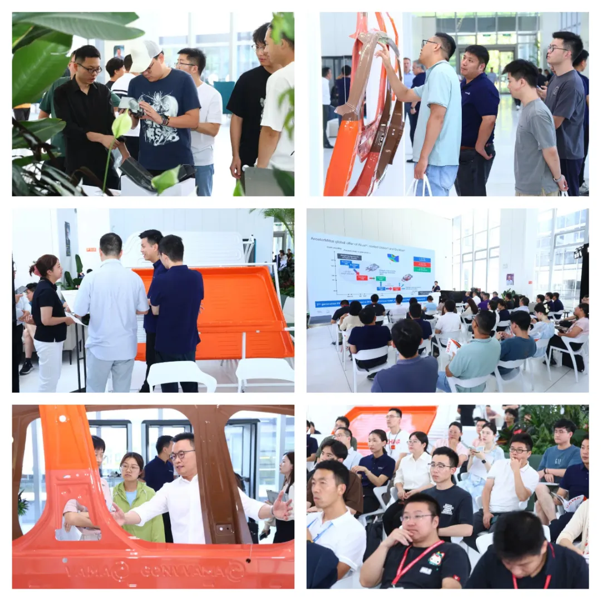On July 25th, at the YunGu Innovation Park in Hefei, Anhui, the Volkswagen China Technology (VCTC) - VAMA & GONVVAMA Innovation Steel Tech Day was held.
As the largest R&D center of the Volkswagen Group outside of its headquarters in Germany, VCTC focuses on the local research and development and production of new energy vehicles. It integrates cutting-edge global technologies and applications into new models while promoting the in-depth involvement of local suppliers in the early stages of vehicle body development, accelerating technological innovation and the transformation of achievements.
Over the past 15 years, ArcelorMittal has led the automotive industry towards lighter, safer, and more environmentally friendly solutions with its S-in motion® suite of advanced high-strength steel solutions. Today, the trend towards electrification is reshaping the automotive landscape that has evolved over nearly a century, with this trend being particularly pronounced in the Chinese market.
In recent years, ArcelorMittal through its joint ventures, VAMA and GONVVAMA, introduce wide ringe of solutions dedicated to the needs of Chinese market. These include integrated hot formed, laser welded MPI solutions, steel battery packs, advanced steel grades and coatings, all designed to address response to the new challenges brought by electrification.
Innovation in materials is key to achieving sustainable development in the automotive industry. Since their introduction in 2017, the second-generation aluminum-silicon coated hot-formed steels Usibor®2000 and Ductibor®1000 have been widely used in the Chinese market. The third-generation product, Ductibor®1500, which is currently under development, features an even more superior combination of strength and toughness, promising a revolutionary change in body-in-white design. This product is expected to enter mass production domestically next year. The third-generation cold-formed steel Fortiform® combines high strength with high plasticity, further breaking through the technical ceiling of ultra-high-strength cold stamping steels and providing design ideas for lightweight structural components produced by cold-forming processes. Additionally, ArcelorMittal's innovative zinc-magnesium-coated products offer excellent surface corrosion resistance and can be used for both interior and exterior automotive panels. The VAMA No. 2 galvanizing line is already equipped with the technological reserves for such advanced steel products.
To gradually achieve 'net zero emissions' in production, Volkswagen enhances production efficiency and reduces carbon emissions through the integration of the industrial value chain, aligning with ArcelorMittal's multi-part integration concept. By applying hot-formed steel and laser-welded hot-formed technology, the multi-part integration solutions not only significantly reduce the number of parts and simplify the manufacturing and assembly processes but also markedly decrease the floor space required in the assembly workshop, thereby improving overall efficiency. Moreover, combinations of different part integration solutions further streamline the process. For instance, combining six solutions such as inner and outer door rings and upper and lower battery rings can reduce the production time per vehicle in the assembly workshop by 30%. Additionally, support from ArcelorMittal's XCarb® product range plays a crucial role in advancing the decarbonization efforts of the automotive industry.
In today's rapidly evolving battery pack design landscape, hot-formed steel technology provides a perfect material solution for ultra-large battery pack housings, meeting both high strength and large size standards. This ensures that parts maintain high strength characteristics and mechanical performance after stamping, while preserving their large dimensions. Leveraging ArcelorMittal's global R&D capabilities, VAMA has been developing hot-formed trays since 2018, continuously updating hot-formed battery pack housing components—including top covers, deep-drawn trays, bottom shields, and frames—according to customer needs, thereby building a safety shield for electric vehicles.
The integrated design of ArcelorMittal's body-in-white and battery allows for greater synergy within the vehicle structure, further simplifying the production process.



